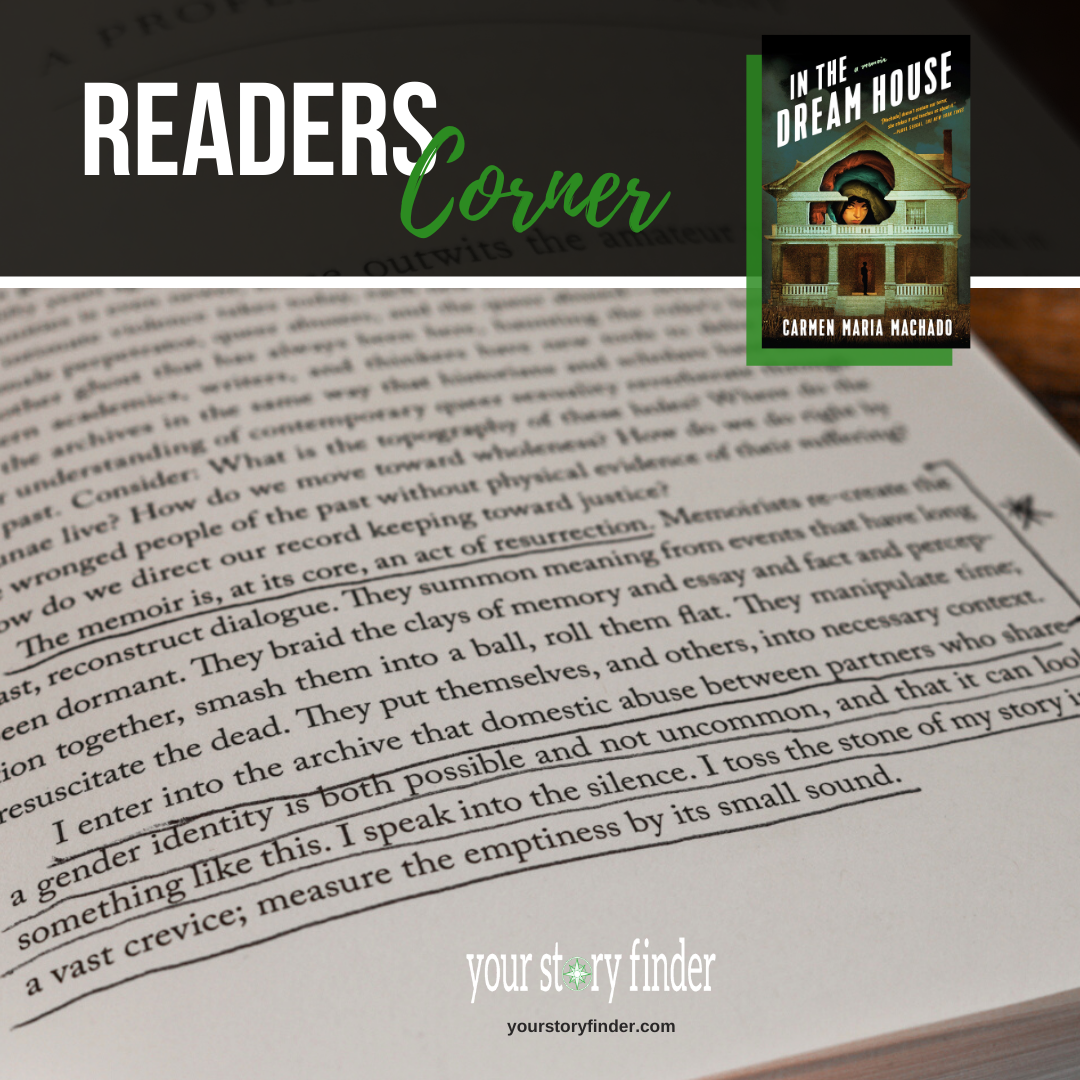Readers Corner: In The Dream House


In the Dream House is an extraordinary, genre-breaking memoir.
“Chapters” range from multiple pages to one with a single sentence.
Fragments, slivers, shards of memory.
Leaps back and forth in time, in point of view, in place.
But it works because the author knows what she has come to the page to say.
She lets us know her point from the very opening pages:
“I enter into the archive that domestic abuse between partners who share a gender identity is both possible and not uncommon, and that it can look something like this.”
Skillful writers can break conventions but they still have to have a point.
The structure a writer chooses needs to be in service of that point.
What’s the last genre-bending book you’ve read? What did you think about it?
Interspersed between chapters that are more narrative in nature—i.e, they follow the real-life story of the abusive relationship between the author and her girlfriend—are chapters that tell the story through different devices.
A standalone chapter on “gaslighting” explores the movie from which the term originated. We readers know the author is sharing this information because that’s precisely what happened in her relationship. But she doesn’t need to tell us that. She doesn’t need to write, “And this is what my girlfriend did to me.” She lets the disparate pieces speak for themselves and allows the reader to make the connections.
This author makes her reader do a lot of work.
Do you prefer easy reads or books that challenge you?

Memoir writers have to hold two perspectives—aka points of view—in their heads at all times.
There’s the “you” as a character in your story
And then there’s the “you” as the narrator of the story, the persona who has the benefit of time to reflect on the events that happened to the “character you.”
In this book, the author distinguishes between the two perspectives, by naming one “you” and the other “I.”
It’s almost as if the author is writing about an entirely different person. And in some ways, she is.
What’s the last memoir you read that you told a friend, “You have to read this”? What compelled you to say that?
Machado is not only a rule breaker, but she’s playful in how she breaks the rules. Playfulness is an interesting choice given her very heavy subject matter. In “The Dream House as Choose Your Own Adventure,” she takes the reader through multiple paths in the guise of “adventures” that she and her girlfriend could have taken after an episode of abuse. This chapter—and the whole book—is inventive, creative, and haunting all at once. Looking for a read that will explode your idea of structure and form and keep you riveted at the same time? This is the one.


